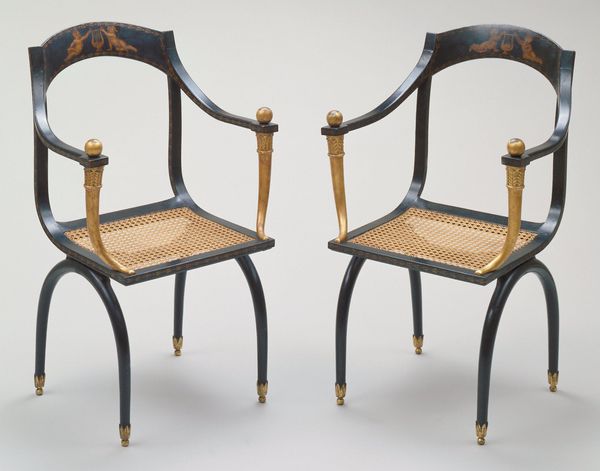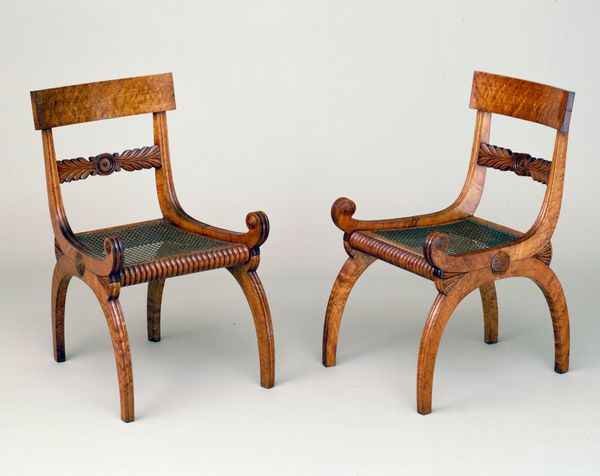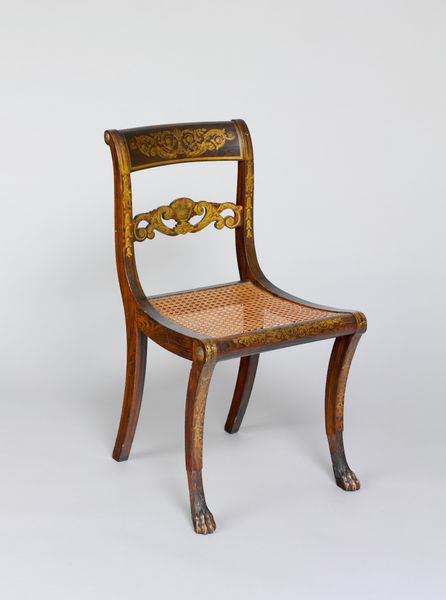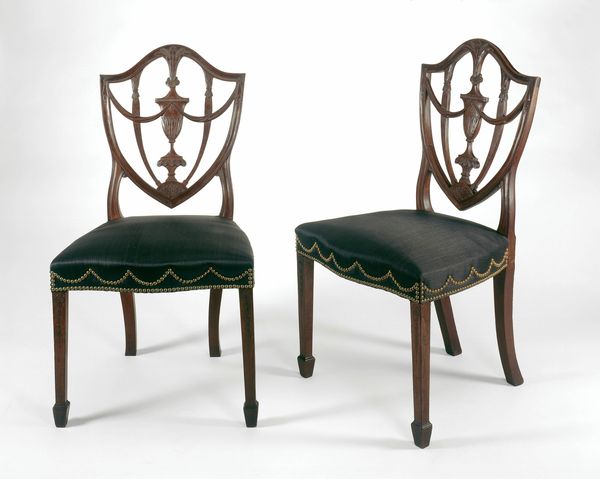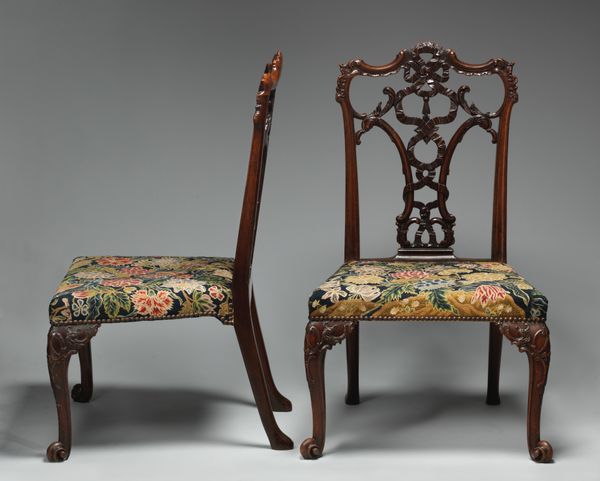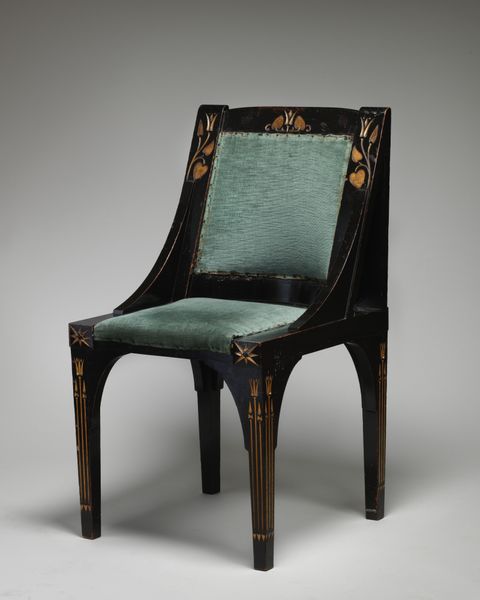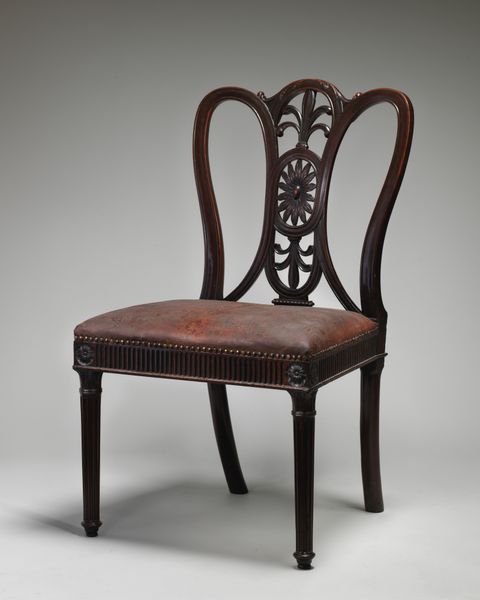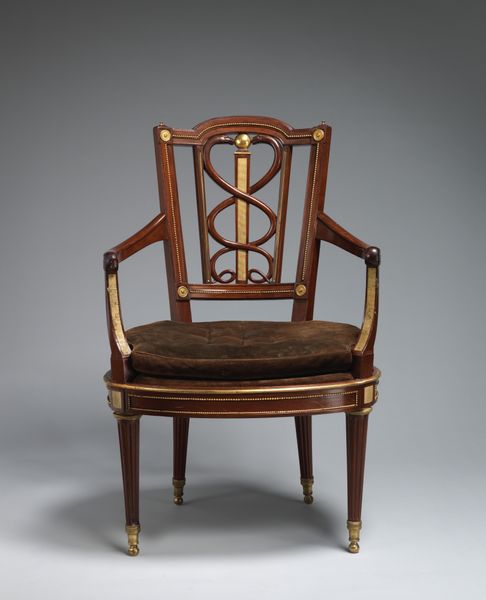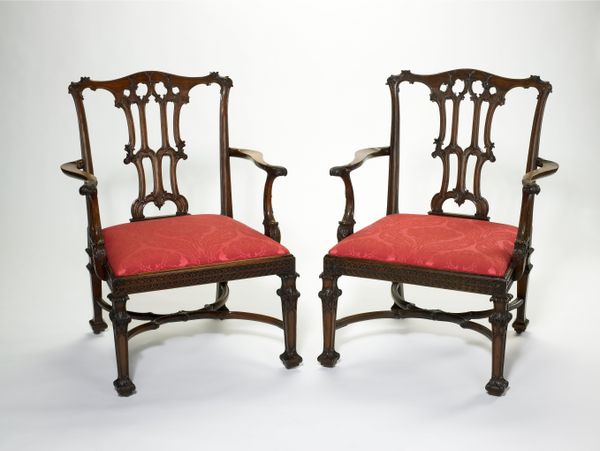
wood
#
neoclacissism
#
furniture
#
wood
#
decorative-art
Dimensions: 35 1/2 x 22 x 21 1/2 in. (90.17 x 55.88 x 54.61 cm)
Copyright: Public Domain
Editor: This is a pair of armchairs created around 1805 by Jean-Joseph Chapuis. They're crafted from wood, and what immediately strikes me is the elegant curvature and the contrasting dark wood and gilded details. They give off a sense of classical refinement. What do you see in them? Curator: These armchairs aren't merely furniture; they're potent carriers of cultural memory. The Neoclassical style immediately invokes the grandeur of ancient Greece and Rome, reborn through the eyes of the early 19th century. Notice the lyre and figures painted on the back; it speaks to the symbolic importance of music and learning that defined that era's aspirations. The chairs aren't meant for just sitting, are they? Editor: Probably not for slouching! They seem rather formal. Do you think the imagery specifically conveyed anything about the owner? Curator: Undoubtedly. Patrons of Neoclassical art often sought to align themselves with the virtues and ideals of antiquity. Owning such pieces wasn't simply about aesthetics; it was about declaring one’s embrace of reason, order, and classical wisdom. They functioned almost as secular icons in domestic spaces. Does the positioning of two identical chairs facing forward imply something of human relationships? Editor: Maybe facing each other, in contemplation? What would be required of the people sitting there? Curator: It evokes dialogue, contemplation, and a certain formality of interaction, don't you think? More than a place of rest; the are a statement. Editor: That makes me see them in a new way – not just as beautiful objects, but as active participants in shaping the culture of the time. Thanks! Curator: And I see, through your questions, the enduring power of these symbols to still ignite curiosity.
Comments
No comments
Be the first to comment and join the conversation on the ultimate creative platform.
